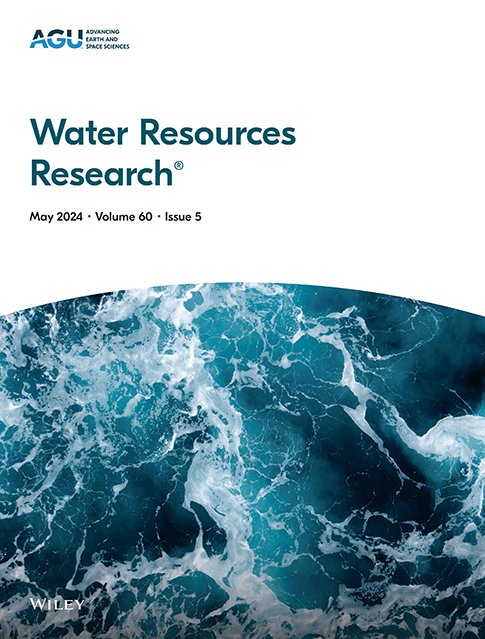A Non-Sigmoidal-Curve-Dependent Dynamic Threshold Method Improves Precipitation Phase Partitioning in the Northern Hemisphere
IF 4.6
1区 地球科学
Q2 ENVIRONMENTAL SCIENCES
引用次数: 0
Abstract
Given the significant impact of precipitation phase transitions on water and energy balances, accurate phase partitioning is essential for hydrological modeling. Many commonly used precipitation phase partitioning methods (PPMs) rely on sigmoidal curve assumptions to determine thresholds, leading to biased partitioning results. Here we developed a non-sigmoidal-curve-dependent dynamic threshold method (NSDT) to establish time-varying and spatially varying thresholds for classifying precipitation into rain, snow, and sleet in the Northern Hemisphere. The NSDT avoids curve-fitting errors by directly calculating thresholds from snowfall and rainfall frequency curves. In this method, relative humidity and elevation are the two most influential variables to precipitation phase, and single-threshold and dual-threshold strategies are employed separately across different relative humidity ranges. The results show that station thresholds derived from NSDT have marked spatial variability. Furthermore, the NSDT performs well and robustly, with accuracy exceeding 80% over the wet-bulb temperature range [−10°C, 10°C] at each elevation range, relative humidity subinterval, and sub-time period. The NSDT outperforms six commonly used PPMs, especially at high elevations. Regarding the wet-bulb temperature range of [−4°C, 4°C], NSDT exhibits accuracy improvements ranging from 1.0% to 11.8% (0.4%–14.5%) across all elevation (relative humidity) subintervals compared to other PPMs. Overall, the NSDT method developed herein improves precipitation phase partitioning, which is expected to enhance the simulation accuracy of land surface models and hydrological models and provide a theoretical basis for a more accurate understanding of hydrological processes.非s型曲线相关的动态阈值方法改善了北半球降水相位分配
考虑到降水相变对水和能量平衡的重要影响,准确的相划分对水文建模至关重要。许多常用的降水相分配方法(PPMs)依赖于s型曲线假设来确定阈值,导致分配结果有偏差。本文提出了一种非s型曲线依赖的动态阈值方法(NSDT),建立了北半球降水分为雨、雪和雨夹雪的时变和空间变化阈值。NSDT通过直接计算降雪和降雨频率曲线的阈值来避免曲线拟合误差。在该方法中,相对湿度和海拔是对降水相位影响最大的两个变量,在不同相对湿度范围内分别采用单阈值和双阈值策略。结果表明,基于NSDT的台站阈值具有明显的空间变异性。此外,NSDT在每个海拔范围、相对湿度亚区间和亚时间段的湿球温度范围[- 10°C, 10°C]内表现良好且稳定,精度超过80%。NSDT优于六种常用的ppm,特别是在高海拔地区。在湿球温度[−4°C, 4°C]范围内,与其他PPMs相比,NSDT在所有海拔(相对湿度)亚区间内的精度提高了1.0%至11.8%(0.4%-14.5%)。总体而言,本文开发的NSDT方法改善了降水相划分,有望提高陆面模型和水文模型的模拟精度,为更准确地理解水文过程提供理论基础。
本文章由计算机程序翻译,如有差异,请以英文原文为准。
求助全文
约1分钟内获得全文
求助全文
来源期刊

Water Resources Research
环境科学-湖沼学
CiteScore
8.80
自引率
13.00%
发文量
599
审稿时长
3.5 months
期刊介绍:
Water Resources Research (WRR) is an interdisciplinary journal that focuses on hydrology and water resources. It publishes original research in the natural and social sciences of water. It emphasizes the role of water in the Earth system, including physical, chemical, biological, and ecological processes in water resources research and management, including social, policy, and public health implications. It encompasses observational, experimental, theoretical, analytical, numerical, and data-driven approaches that advance the science of water and its management. Submissions are evaluated for their novelty, accuracy, significance, and broader implications of the findings.
 求助内容:
求助内容: 应助结果提醒方式:
应助结果提醒方式:


